Today, April 8, observers across North America will be excitedly awaiting the solar eclipse, particularly those along the path of totality who will get to see a total solar eclipse.
While a total solar eclipse won't be visible, it will be possible to observe the April 8 eclipse from the UK and Ireland, and in this guide we'll show you how to photograph it, too.
If you are based along the path of totality in North America, read our guide on how to photograph the April 8 total solar eclipse.
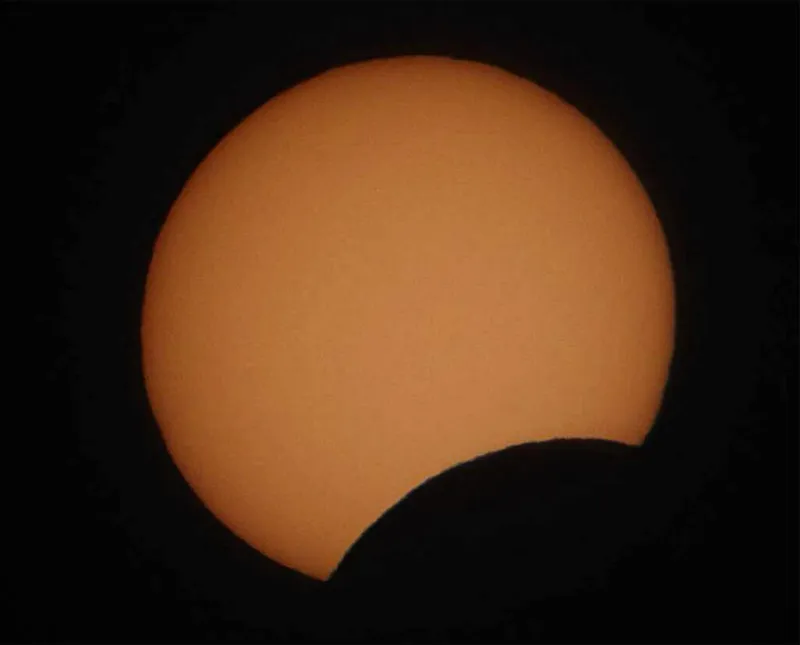
What the April 8 eclipse will look like from UK and Ireland
In the UK, we’re too far away from totality to be able to see anything close to a total, but if you live in the western part of the country, you do stand a chance of seeing a partial solar eclipse at sunset.
On April 8, from the UK and Ireland you should be able to see a partial solar eclipse with plenty of the photosphere visible, so a protective solar safety filter needs to be used both for your eyes and for your equipment.
You can also use a solar telescope to safely observe a partial solar eclipse.
As the Sun gets low in the sky, its light is attenuated (dimmed) by a thicker layer of atmosphere. This can lull you into a false sense of security.
A low Sun can still cause eye and equipment damage, so it pays to be vigilant.
The dimmer light of the Sun at low altitude may tempt you to risk a capture without filters.
We don’t advise this; however, there are things you can do to mitigate the risk of damage to equipment and eyesight.

Safety and solar filters
When observing the April 8 eclipse, don’t allow your kit to be exposed to the Sun’s light continuously, and definitely do not view the Sun with unprotected eyes or equipment.
In this way, if you misjudge things, it’s just your equipment that gets damaged.
Remember also, artificially high horizons, caused by viewing the event from buildings or elevated terrain, mean the Sun’s light won’t be dimmed by as much as it would be if you were looking at a zero-degree horizon, say, over the sea.
With a solar safety filter fitted, the Sun’s light is dimmed to such a degree that you can safely take shots of the eclipse without damaging equipment.
The filter needs to cover the full open aperture of your lens or telescope. If using the latter, remember to remove, cap or filter any attached finders too.
Once the filter is fitted, imaging is exactly the same as how you would attempt, say, the Moon.
However, be aware that a large image scale that fills the sensor of a DSLR (or equivalent) is likely to produce a less than sharp image, due to the increased atmospheric seeing at low altitude and atmospheric dispersion, which subtly spreads the Sun’s colour.
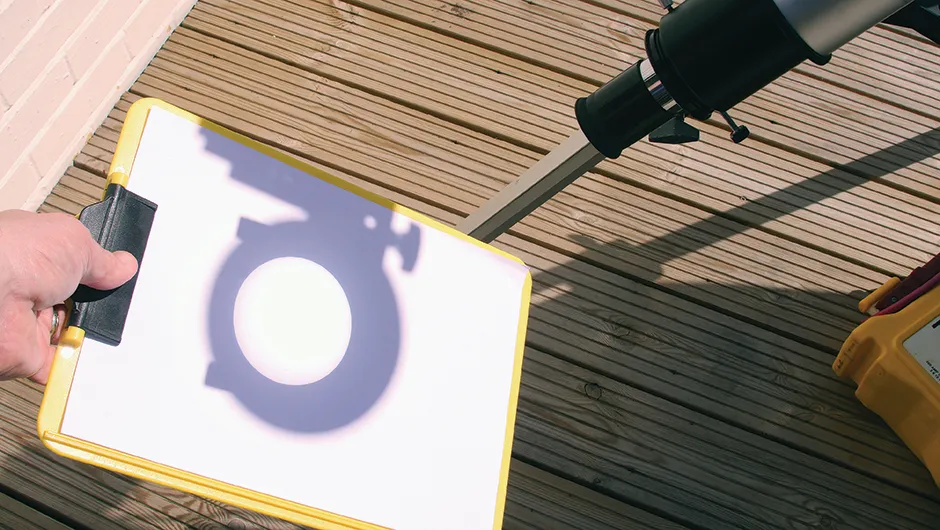
Other ways to capture the eclipse
There are alternative methods of photographing an eclipse, of course, some of which are very low-tech.
The popular pinhole projection method works very well.
At the other end of the spectrum, high-end filters such as those used to capture the Sun in hydrogen-alpha or calcium-K light can be used to record the partial in an interesting manner.
An advantage of H-alpha captures is that being a longer wavelength, seeing has less of a detrimental effect. Also, essentially being monochrome, H-alpha light doesn’t suffer from atmospheric dispersion.
Equipment
- Solar filter
- DSLR (or equivalent)
- 200mm or longer focal length lens or telescope
- Tripod or tracking mount
Photograph April 8 eclipse from UK and Ireland, step-by-step
Step 1
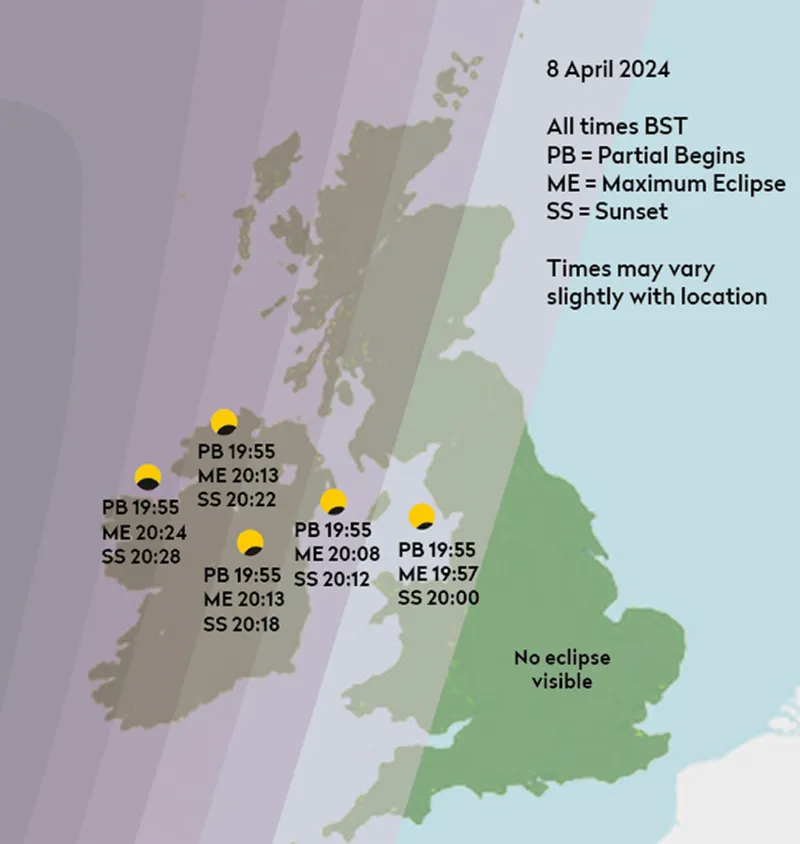
To observe and image the sunset eclipse on 8 April, you’ll need to be towards the west of the UK – the further west the better.
As the event occurs at sunset, a low western horizon is recommended too, preferably one over the sea if possible.
Choose a lens or telescope with a focal length of at least 200mm to show the eclipse.
Step 2
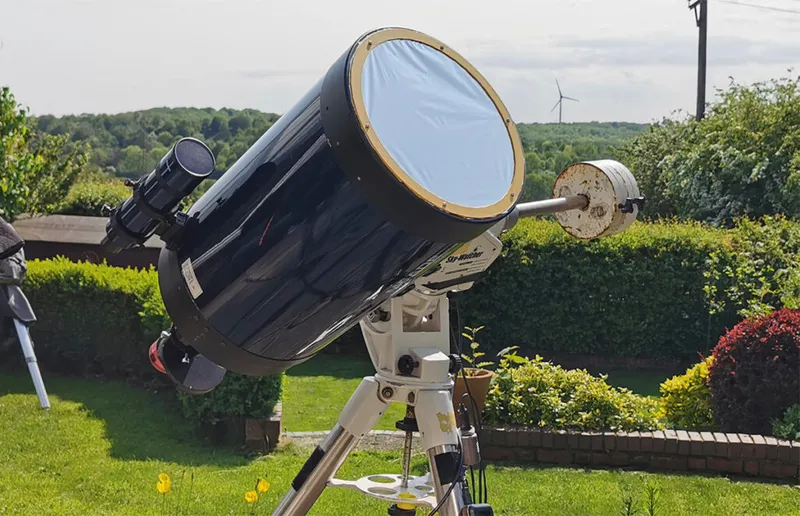
A solar safety filter should be fitted over the front of your lens or telescope, taking note to remove, cap or filter any finders fitted to a telescope.
Once fitted and before the start of the eclipse, point the setup at the Sun and focus as accurately as possible on either the edge of the Sun or, preferably, on any sunspots.
Step 3
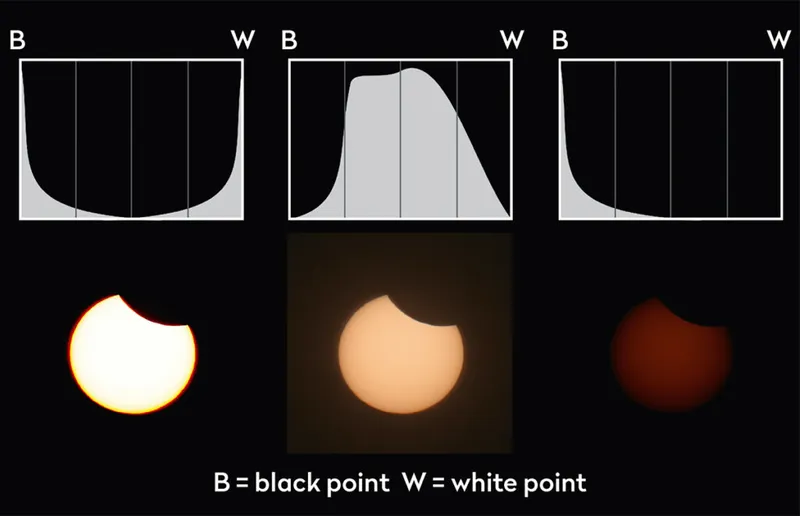
A low to mid ISO can be used for this image.
If using a lens, we’d recommend stopping the aperture to around f/11–f/16.
Adjust the exposure so the centre of the Sun’s disc is not over-exposed to white.
Check your histogram display to make sure the ‘mountain peak’ graph is between the black and white points of the display.
Step 4
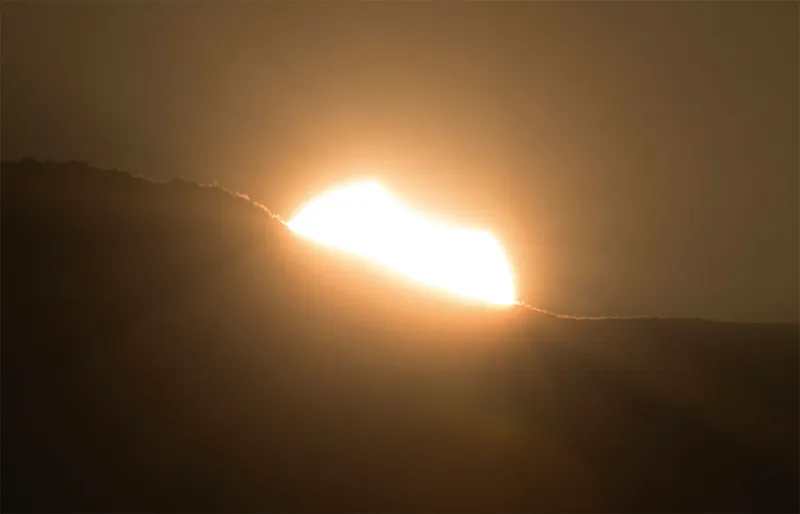
If you know what you’re doing and the Sun is really low, at your own risk it may be possible to grab a shot of the eclipse and any foreground scenery without a filter attached.
Don’t view through the viewfinder; use live view. We do not recommend pointing equipment at an unfiltered Sun for any length of time.
Step 5
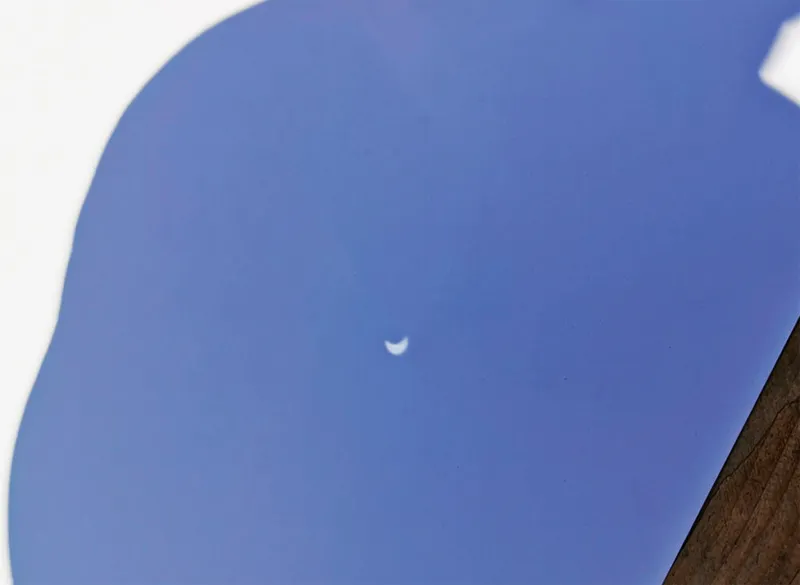
A safe way to grab a view of the eclipse is to create a 1–2mm hole in card and project the Sun’s image onto a white sheet of paper.
This creates a small pinhole image of the eclipse that can be imaged using a smartphone.
The use of some form of stand or a second pair of hands is recommended to keep everything in position.
Find out more about alternative methods in our guide on how to safely view a solar eclipse.
Step 6
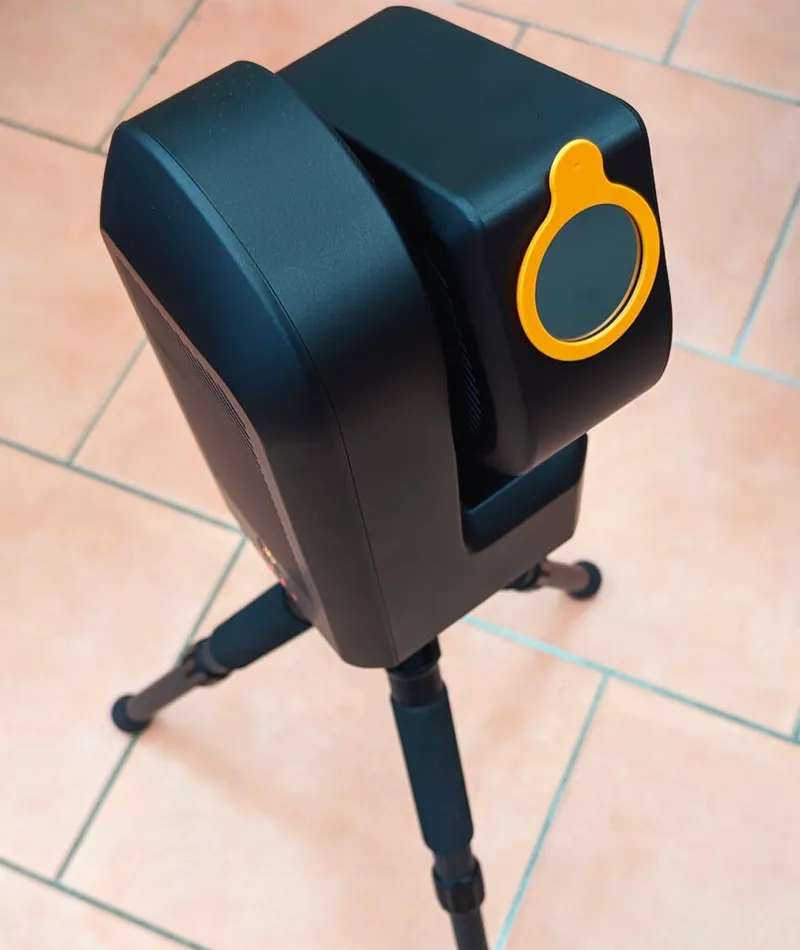
There are many ways to capture the event. Using narrowband hydrogen-alpha or calcium-K filters will produce interesting images.
For this, you’ll need a monochrome high-frame-rate imaging setup.
Alternatively, if you have a smart telescope with a solar filter, this can take a lot of the hassle out of tracking the Sun, providing a way to image the event and maybe capture a timelapse too.
Did you manage to capture an image of the solar eclipse? Don't forget to send us your images.
This guide appeared in the April 2024 issue of BBC Sky at Night Magazine.
